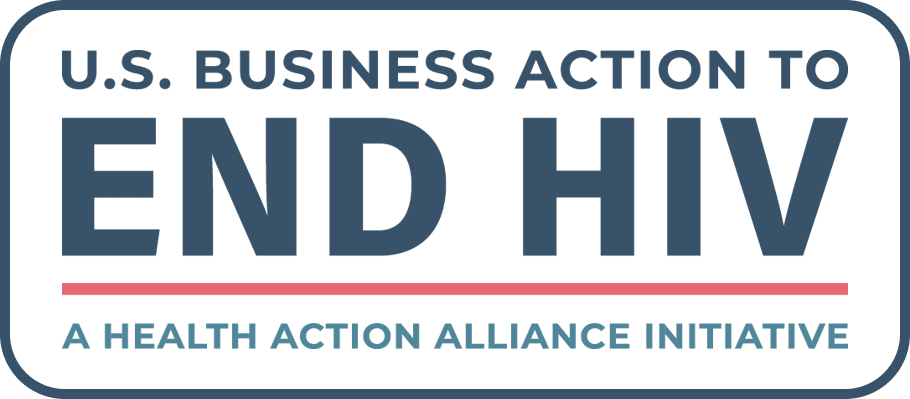
| TBD Panels | 3-Panel STD Test | 9-Panel STD Test | 5-Panel STD Test | 3 Site: Oral, Rectal, Genital |
|---|---|---|---|---|
| Chlamydia |  |  |  |  |
| Gonorrhea |  |  |  |  |
| Trichomoniasis |  |  |  | |
| HIV (Ag/Ab) |  |  | ||
| Syphilis |  |  | ||
| Hepatitis B & C |  | |||
| HSV I |  | |||
| HSV II |  |
- 8 E Charleston Blvd
- Las Vegas, NV 89104
- Tues and Fri
- 10 AM – 2PM
- Contact us:
- +1 (702) 909-0554
- hello@tbd.health

| TBD Panels | 3-Panel STD Test | 9-Panel STD Test | 5-Panel STD Test | 3 Site: Oral, Rectal, Genital |
|---|---|---|---|---|
| Chlamydia |  |  |  |  |
| Gonorrhea |  |  |  |  |
| Trichomoniasis |  |  |  | |
| HIV (Ag/Ab) |  |  | ||
| Syphilis |  |  | ||
| Hepatitis B & C |  | |||
| HSV I |  | |||
| HSV II |  |

As healthcare providers, we know that for many folks, abortion is not just a topic of discussion or a debatable political issue, but is rather a part of their reality. We have seen folks in all walks of life come to this decision - such as teens, parents of multiple children, young people early in their careers, people who are not ready/do not want to continue with pregnancy, and those whose pregnancy could be harmful for themselves or for the fetus. Whatever the reason(s) may be - we know that most people do not make these decisions lightly and that many women and families are impacted by this.
In fact, 1 in 4 women in the United States will undergo a termination at some point in their lives. This is similar to the worldwide rate of 25% of women. This rate may change a bit based on a variety of factors, like access to reproductive healthcare and contraception (aka birth control), age, and socioeconomic status.
And while 1 in 4 women may choose this option, many more people will also consider it or at least will know someone who has considered it.
Know the Terms: What is an abortion?
Abortion, also called pregnancy termination or elective abortion in medical terms, refers to medical treatment that is used to end a pregnancy and to prevent the development of a fetus.
In medical terminology, the term “abortion” can actually refer to two types of abortion - spontaneous abortions, more commonly referred to as miscarriages, and elective abortions, meaning pregnancy terminations that a person chooses to receive treatment for.
When we talk about a pregnancy, it’s also important to remember that the term pregnancy can be referring to both viable and non-viable pregnancies. Some pregnancies are unable to continue safely due to a risk to the pregnant person and/or the fetus. There aren’t commonly used names to differentiate the reasons why an abortion is chosen.
TBD Recommends: Generic Plan B
Factors in Making the Decision About Treatment
If interested in moving forward with an abortion, you should go over your options and risks and benefits of different treatment options with a medical provider. We know finding a good healthcare provider is not always easy, but a good healthcare provider will work with you to learn about your medical history, preferences, options and guide you through options for pregnancy that make the most sense for you, whether that includes abortion or other options.
Factors that you should discuss with your healthcare provider that help determine the safest and most effective treatment for you include the following:
What stage of pregnancy a person is in: The timing of the pregnancy is probably one of the most important factors here. This can be determined by the date of one’s last menstrual period (if you know it). It can also sometimes be determined by some bloodwork, an exam, and possibly an ultrasound to observe the size of a fetus. Typically, pregnancies still in the first trimester have the most options.
The health status of the person with the pregnancy: Different health status can impact the ability to safely have different procedures done. For example, people with a history of anemia or bleeding disorders may be recommended to have a surgical procedure instead of a medication procedure due to the risks of blood loss.
The local legal and medical resources: Depending on what state you live in, the local laws and regulation may restrict access to what kind of treatment is available, especially depending on what stage of pregnancy this is in and if you’re considered a minor. Some states do not allow for abortion at all. Other state are restricted by the number of medical resources - such as the number of providers who have been trained for these procedures.
Personal access and preference: If a person is medically eligible (meaning it’s safe for different treatment options), the choice then comes down to what’s near you and what kind of procedure you prefer, such as choosing between in person or potentially home treatment.
What Are the Treatment Options?
Most abortions occur in the first trimester of pregnancy, about 12 weeks of gestation. Typically, there are two main treatment options in the first trimester of pregnancy: medication (i.e pills to take) or surgical abortions. In the second trimester of pregnancy, the safest option is typically a surgical procedure.
Medication Abortions: Medication abortions can usually be used up to 11 weeks of gestation/pregnancy. Some people refer to this as the “abortion pill” but this kind of treatment typically includes two kinds of medications, mifepristone and misoprostol. These pills are typically given at a medical provider’s office, but can sometimes be prescribed via telemedicine.
The first medication called mifepristone, a pill that you swallow, helps to prevent the fetus from growing. The second is called misoprostol, which you usually take within 1-2 days after the first pill, helps to empty your uterus. This can cause some cramping like during a period and some vaginal bleeding. Misoprostol is often taken by vaginal or buccal (in the cheek) routes. Together, these options are very safe and effective, up to 98% effective. Some people may need an extra dose of medication depending on the stage they are at in pregnancy.
Typical effects to expect include some vaginal bleeding and abdominal cramping, sometimes some nausea, vomiting, fever, and chills. Rarely, there’s too much bleeding or pain. If that happens, you can contact your healthcare provider to help figure out what’s going on. You might have some follow up within the next 2 weeks to confirm that the medication worked and that there are no complications, which may include an exam and some tests. They may also talk to you about options for birth control if you’re open to that discussion as well.
Surgical/Procedural Abortions: Surgical or procedural abortions are often done in clinics or outpatient surgery centers. The goal of these procedures is to terminate the pregnancy by emptying the uterus. There are different types of procedures, but the most typical ones are the following:
Suction abortion (AKA vacuum aspiration or uterine aspiration) is the most common type of procedure done and is usually done in the first trimester. During the process, which typically takes less than 30 minutes, a medical provider might give you some medication for pain and//or to numb the area and then uses a small medical instrument to gently suction the inside of the uterus. Dilation and Evacuation (D&E) is a less common kind of procedure that uses suction and some other medical instruments to help empty the inside of the uterus as well. Dilation means to gently open the lower part of the uterus (the cervix). Evacuation is a technical term meaning to use a medical instrument to help remove the lining of the uterus and any tissue inside it. This can be used later in later stages of pregnancy. Before the procedure, many will often be recommended to take some antibiotics to prevent an infection. Most people can go home the same day as these procedures, usually after a period of recovery in the clinic. Usually people may have a little vaginal bleeding and/or cramping, but most people rarely have serious complications. These procedures are over 99% effective, and are generally safe if done with a well-trained clinician and with good follow-up.
What should someone expect following the procedure?
With both medication and/or surgical abortions, people may experience some increased vaginal bleeding (like a period) or abdominal cramping. Your healthcare provider will also go over the warning signs of when to call or come back to the clinic in the rare case there are complications.
Many people may need to rest for the day. It’s also common (and totally OK) to have a lot of emotions - perhaps mixed emotions following this procedure.
Ok…what about long-term effects?
If performed safely like with a trained professional, this does not typically cause infertility or difficulty getting pregnant in the future.
Where can I go for more information?
If you have a trusted, regular healthcare provider or a OB/GYN, call them to see if they know of any local resources. Otherwise, you can always consider places like Planned Parenthood. AbortionFinder.org is another good website to see what is available in your area.
We know that decisions about pregnancy are often not easy and that people often have mixed feelings about this. Whatever you decide to choose, we encourage you to research your options, talk to a trusted healthcare provider, and make the decision that is best and safest for you.
This article provides information about sexual health, healthcare and/or related subjects. The blog content and any linked materials herein are not intended to be, and should not be construed as a substitute for, medical or healthcare advice, diagnosis or treatment. Any reader or person with a medical concern should consult with an appropriately-licensed physician or other healthcare provider. This blog is provided purely for informational purposes. The views expressed herein are not sponsored by and do not represent the opinions of TBD HEALTH INC.
Email us and a team member will get back to you within 24 hours. We’re also available via call or text at +1 (702) 909-0554
Sign up below to get 10% off
By providing my email address, I agree to receive email with marketing communications from TBD Health including news, promotions and exclusive offers. I understand that I can opt out at any time by using unsubscribe links. Visit our Terms of Service or Privacy Policy for more information.








